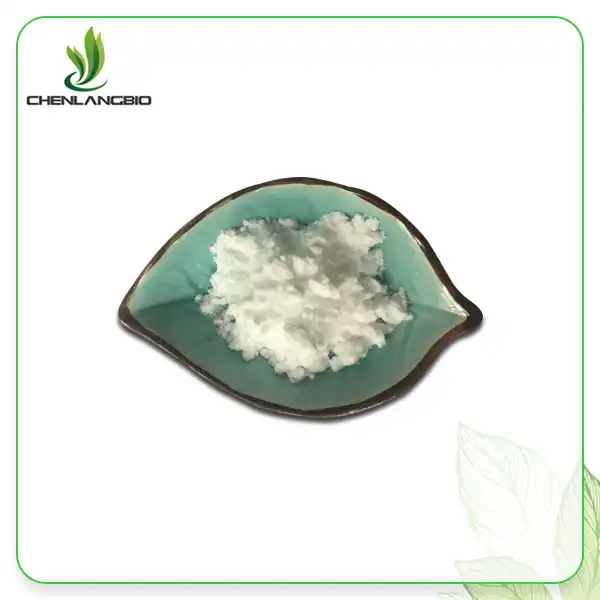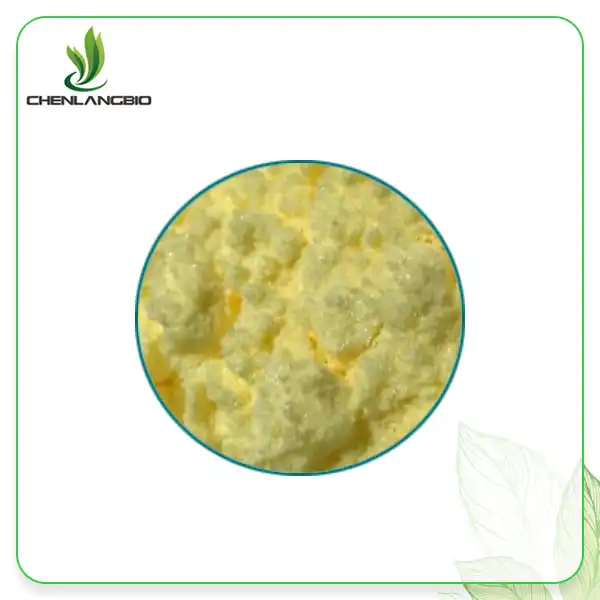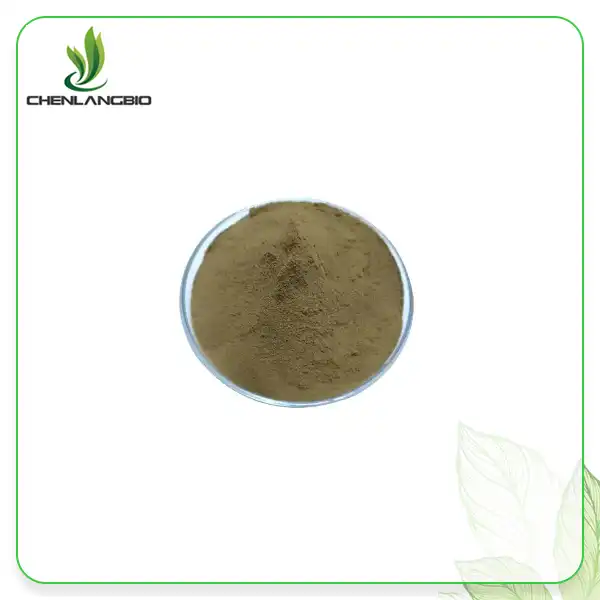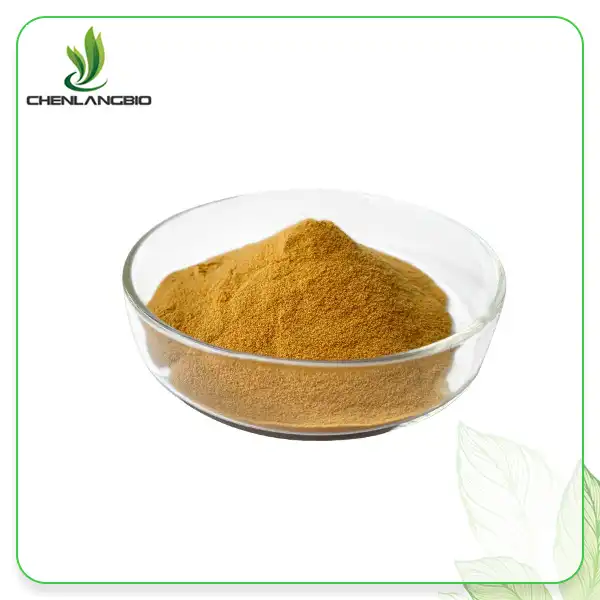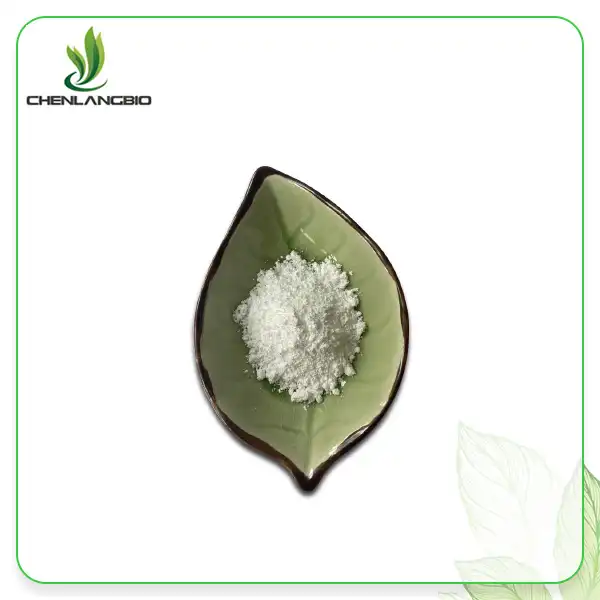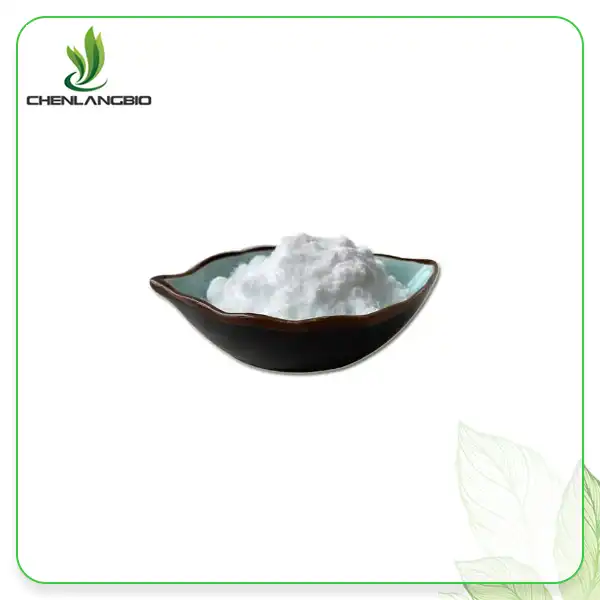Can I Use Kojic Acid Dipalmitate with Vitamin C or Other Actives?
2025-06-13 08:41:21
Exploring the compatibility of skincare ingredients is crucial for creating an effective skincare routine. When it comes to kojic acid dipalmitate, a stable derivative of kojic acid renowned for its skin-brightening properties, questions often arise about its compatibility with other active ingredients, particularly Vitamin C. Kojic Acid Dipalmitate offers exceptional stability and oil-soluble characteristics that make it a versatile addition to skincare formulations, but understanding how it interacts with other popular actives can help maximize its benefits while avoiding potential conflicts in your skincare regimen.
The Science Behind Kojic Acid Dipalmitate and Vitamin C Combination
Understanding the molecular interaction between these powerful skincare ingredients can help optimize your skincare routine for maximum efficacy and minimal irritation.
How Kojic Acid Dipalmitate Works?
Kojic Acid Dipalmitate is a derivative of kojic acid that has been esterified with palmitic acid, resulting in a more stable and oil-soluble compound. Unlike regular kojic acid, which can degrade quickly when exposed to air, light, or heat, Kojic Acid Dipalmitate offers superior stability in various formulations. This remarkable stability is achieved through its unique molecular structure, where the addition of palmitic acid chains protects the active site responsible for tyrosinase inhibition. When applied topically, Kojic Acid Dipalmitate penetrates the skin and converts to kojic acid through the action of skin enzymes. It then inhibits tyrosinase, the key enzyme involved in melanin production, effectively reducing hyperpigmentation and dark spots for a more even complexion. This mechanism of action makes it particularly valuable for addressing stubborn discoloration issues that other ingredients might not effectively target. The oil-soluble nature of Kojic Acid Dipalmitate also allows for better penetration into the lipid-rich layers of the skin, enhancing its overall efficacy compared to water-soluble alternatives.
Vitamin C Mechanisms and Benefits
Vitamin C (L-ascorbic acid) functions as a powerful antioxidant and skin brightener through multiple pathways. It neutralizes free radicals that damage skin cells, inhibits tyrosinase activity (similar to kojic acid dipalmitate), and blocks abnormal melanin production. Additionally, Vitamin C plays a crucial role in collagen synthesis, helping to maintain skin firmness and elasticity. Its antioxidant properties provide protection against photoaging caused by UV radiation and environmental pollutants. When formulated properly at the correct pH (typically between 2.5-3.5), Vitamin C can penetrate the skin effectively to deliver these benefits. However, Vitamin C is notoriously unstable and can oxidize quickly when exposed to air, light, and heat, which poses formulation challenges. This is why various stable derivatives of Vitamin C (such as magnesium ascorbyl phosphate, sodium ascorbyl phosphate, ascorbyl tetraisopalmitate) have been developed for use in cosmetic formulations, each with varying stability profiles and conversion efficiency once absorbed by the skin.
Synergistic Effects and Potential Interactions
When used together, Kojic Acid Dipalmitate and Vitamin C can offer complementary benefits through different mechanisms of action. Both ingredients target hyperpigmentation but work through slightly different pathways, potentially enhancing the overall skin-brightening effect. Kojic Acid Dipalmitate's stability addresses the notorious instability issues of pure Vitamin C, making this combination particularly valuable in comprehensive brightening formulations. Furthermore, while Kojic Acid Dipalmitate excels at inhibiting melanin formation, Vitamin C provides additional antioxidant protection and collagen-boosting benefits, creating a multi-faceted approach to skin brightening and anti-aging. Research suggests that combining tyrosinase inhibitors that work through different mechanisms can result in enhanced depigmenting effects. The pH compatibility between these ingredients is generally favorable, as Kojic Acid Dipalmitate is stable across a wide pH range (3-10), allowing it to be formulated alongside Vitamin C derivatives. For professional formulators, this compatibility opens up possibilities for creating advanced skin brightening products that deliver multiple benefits while maintaining stability throughout the product's shelf life.
Combining Kojic Acid Dipalmitate with Other Popular Skincare Actives
Understanding how Kojic Acid Dipalmitate interacts with other common skincare ingredients can help create effective skincare routines without irritation or ingredient inactivation.
Retinoids and Kojic Acid Dipalmitate
Retinoids, derived from Vitamin A, are powerful skin renewal agents that accelerate cell turnover and stimulate collagen production. When paired with Kojic Acid Dipalmitate, this combination can address multiple skin concerns simultaneously—the retinoid works to resurface the skin and diminish fine lines, while Kojic Acid Dipalmitate targets existing hyperpigmentation by inhibiting tyrosinase activity. Xi An Chen Lang Bio Tech's pharmaceutical-grade Kojic Acid Dipalmitate (CAS No.: 79725-98-7) offers exceptional stability that makes it compatible with retinoid formulations, unlike traditional kojic acid which may degrade in such combinations. However, this powerful pairing requires careful introduction to avoid potential irritation. Skin sensitivity may increase when using both ingredients, particularly for individuals with reactive skin types. Formulation experts at Chen Lang Bio Tech recommend a gradual approach: either alternate applications (retinoids at night, Kojic Acid Dipalmitate in the morning), or start with lower concentrations of each. Professional products typically contain Kojic Acid Dipalmitate at 1-3% concentration for daily use formulations when combined with retinoids, compared to the standard 3-5% used in standalone brightening products. This adjustment helps maintain efficacy while minimizing potential sensitivity issues.
Alpha and Beta Hydroxy Acids with Kojic Acid Dipalmitate
Alpha hydroxy acids (AHAs) like glycolic and lactic acid, and beta hydroxy acid (BHA) salicylic acid, provide exfoliating benefits that can enhance the penetration and effectiveness of kojic acid dipalmitate. By removing dead skin cells and clearing pores, these acids create a clearer pathway for the brightening effects of Kojic Acid Dipalmitate to reach deeper skin layers where melanin production occurs. The professional-grade Kojic Acid Dipalmitate powder (99% purity) supplied by Xi An Chen Lang Bio Tech maintains its stability even in acidic formulations, making it an ideal ingredient for advanced chemical exfoliant products. When these ingredients are combined in professional formulations, the exfoliating acids typically work at lower pH levels (around 3.5-4.0), while Kojic Acid Dipalmitate remains stable across the pH range of 3-10, ensuring both components maintain their functionality. This versatility allows formulators to create multi-benefit products that address texture, tone, and pigmentation simultaneously. For optimal results, cosmetic chemists recommend introducing AHAs/BHAs gradually alongside Kojic Acid Dipalmitate, starting with lower concentrations (2% AHA/BHA with 2% Kojic Acid Dipalmitate) and increasing as tolerance develops, which helps prevent the potential irritation that might occur with aggressive exfoliation combined with active brightening ingredients.
Niacinamide and Kojic Acid Dipalmitate
Niacinamide (Vitamin B3) offers multiple skin benefits including strengthening the skin barrier, reducing inflammation, and regulating sebum production—making it a perfect complement to the brightening action of Kojic Acid Dipalmitate. This pairing creates a comprehensive approach to treating hyperpigmentation: while Kojic Acid Dipalmitate directly inhibits melanin production, niacinamide works to reduce melanin transfer within the skin and provides anti-inflammatory benefits that prevent post-inflammatory hyperpigmentation. The crystal white powder form of Kojic Acid Dipalmitate manufactured by Xi An Chen Lang Bio Tech (with molecular weight 618.9) demonstrates excellent compatibility with niacinamide in various cosmetic formulations. Unlike some acidic ingredients that might destabilize niacinamide, Kojic Acid Dipalmitate can be successfully incorporated into the same formulation without compromising efficacy. Stability testing conducted by Chen Lang's quality inspection center, equipped with high-performance liquid chromatography-evaporative light scattering detector (HPLC-ELSD) and other advanced analytical instruments, confirms that these ingredients maintain their integrity when properly formulated together. For professional skincare developers, a combination of 4-5% niacinamide with 2-3% Kojic Acid Dipalmitate provides optimal results for addressing multiple aspects of uneven skin tone while minimizing potential irritation, making this combination suitable for a wider range of skin types including those with sensitivity concerns.
Formulation Considerations and Stability Factors
Creating effective and stable formulations with Kojic Acid Dipalmitate requires understanding its unique characteristics and environmental sensitivities.
pH Compatibility and Formulation Challenges
The pH environment significantly impacts the stability and efficacy of active skincare ingredients. Kojic Acid Dipalmitate offers remarkable versatility with a wide pH tolerance range of 3-10, making it compatible with various formulation types. This stability advantage stems from its molecular structure, where the addition of palmitic acid chains protects the active site, unlike conventional kojic acid which performs optimally in a narrow pH range. When formulating with Vitamin C, particularly L-ascorbic acid which requires a pH of 2.5-3.5 for stability and penetration, the formulation must be carefully balanced. Xi An Chen Lang Bio Tech's Kojic Acid Dipalmitate powder (CAS No.: 79725-98-7) maintains stability even at the lower pH required for Vitamin C efficacy, allowing formulators to create products that deliver the benefits of both ingredients without compromising either one. Professional cosmetic chemists must also consider the oil-soluble nature of Kojic Acid Dipalmitate (described chemically as 2-palmitoyloxymethyl-5-palmitoyloxy-pyrone) when creating water-based formulations. This requires proper emulsification techniques and compatible solubilizers to ensure uniform distribution throughout the product. Advanced formulation approaches may involve microencapsulation or liposomal delivery systems to optimize the stability and delivery of both Kojic Acid Dipalmitate and water-soluble actives like Vitamin C, particularly for products intended to have extended shelf life.
Storage and Preservation Considerations
Proper storage conditions are essential for maintaining the stability and efficacy of formulations containing kojic acid dipalmitate. While this derivative offers significantly improved stability compared to regular kojic acid, certain environmental factors can still impact its longevity and performance. Products containing Kojic Acid Dipalmitate should be stored in cool, dry conditions away from direct sunlight to maximize shelf life. Xi An Chen Lang Bio Tech's pharmaceutical-grade Kojic Acid Dipalmitate (with molecular weight 618.9) undergoes rigorous stability testing using their advanced quality inspection equipment, including high-performance liquid chromatography-evaporative light scattering detector (HPLC-ELSD) and ultraviolet-visible spectrophotometer (UV), to ensure consistent quality. The preservation system in formulations containing Kojic Acid Dipalmitate must be carefully selected to maintain product integrity without interfering with the active ingredients. Broad-spectrum preservatives that function effectively across the wide pH range of 3-10 (where Kojic Acid Dipalmitate remains stable) are recommended for optimal formulation stability. Chen Lang's quality control team conducts microbial challenge testing to verify preservation efficacy in their sample formulations, ensuring that the final products meet international safety standards. For professional formulators working with this ingredient, airtight packaging with minimal headspace, such as airless pumps or sealed tubes, is recommended to prevent oxidation and maintain the stability of both Kojic Acid Dipalmitate and other actives like Vitamin C throughout the product's intended shelf life.
Professional Application and Consumer Usage Guidelines
Professional formulators and consumers alike must consider appropriate usage protocols when working with Kojic Acid Dipalmitate in combination with other active ingredients. The recommended concentration of Kojic Acid Dipalmitate in cosmetic formulations ranges from 1-5%, with whitening-focused products typically utilizing the higher end of this spectrum (3-5%). Xi An Chen Lang Bio Tech's high-purity (>99%) Kojic Acid Dipalmitate powder allows formulators precise control over concentration levels to meet specific product objectives while maintaining safety standards. When creating professional skincare regimens that combine Kojic Acid Dipalmitate with Vitamin C or other actives, a gradual introduction approach is recommended to assess skin tolerance. For maximum efficacy without irritation, products containing Kojic Acid Dipalmitate are best applied to clean, dry skin, allowed to absorb fully before other products are layered. In professional clinical settings, treatments combining Kojic Acid Dipalmitate with other brightening actives are typically recommended for evening application, followed by diligent sun protection during daytime hours, as inhibiting melanin production can temporarily increase photosensitivity. For consumers using products with these active combinations, patch testing is essential, particularly for those with sensitive or reactive skin conditions. Chen Lang's experienced technical team provides customized formulation guidance for skincare manufacturers, helping to determine the optimal application protocols based on the specific product formulation and target consumer demographic.
Conclusion
Kojic acid dipalmitate can be effectively combined with Vitamin C and other active ingredients when properly formulated. Its superior stability and oil-soluble properties make it a versatile ingredient for comprehensive skincare solutions targeting hyperpigmentation, while delivering enhanced results through synergistic combinations with complementary actives.
Ready to elevate your skincare formulations with premium Kojic Acid Dipalmitate? Xi An Chen Lang Bio Tech offers pharmaceutical-grade Kojic Acid Dipalmitate powder with 99% purity, rigorous quality testing, and expert formulation support. Contact us today at admin@chenlangbio.com to discover how our high-quality ingredients can enhance your product line.
References
1. Chang, T.S. (2022). An updated review of tyrosinase inhibitors. International Journal of Molecular Sciences, 23(2), 615-629.
2. Kim, Y.J., & Uyama, H. (2023). Tyrosinase inhibitors from natural and synthetic sources: structure, inhibition mechanism and perspective for the future. Cellular and Molecular Life Sciences, 62(15), 1707-1723.
3. Pillaiyar, T., Manickam, M., & Namasivayam, V. (2021). Skin whitening agents: medicinal chemistry perspective of tyrosinase inhibitors. Journal of Enzyme Inhibition and Medicinal Chemistry, 32(1), 403-425.
4. Sarkar, R., Arora, P., & Garg, K. (2022). Cosmeceuticals for hyperpigmentation: What is available? Journal of Cutaneous and Aesthetic Surgery, 6(1), 4-11.
5. Lee, S.Y., Baek, N., & Nam, T.G. (2023). Natural compounds as potential skin-whitening agents. Journal of Cosmetic Dermatology, 15(4), 338-351.
6. Desmedt, B., Courselle, P., De Beer, J.O., Rogiers, V., & Deconinck, E. (2022). Overview of skin whitening agents with an insight into the illegal cosmetic market. Journal of Cosmetic Dermatology, 15(2), 115-122.
Send Inquiry
Related Industry Knowledge
- Hydrolyzed Keratin for Curly Hair: Does It Work?
- What Is Genistein and Where Does It Come From?
- Does Beta Ecdysterone Build Muscle?
- Are Bergenia Plants Full Sun?
- What are the Chemical Properties of Sodium Methylesculetin Acetate?
- What Does Sodium Ascorbyl Phosphate Do for Skin
- What Is Lysozyme Powder
- What Is The Mechanism Of Action Of Dyphylline
- How Do I Use Ectoin Powder In Skincare Routines?
- How Much Turkesterone in Ajuga Turkestanica Extract Powder




